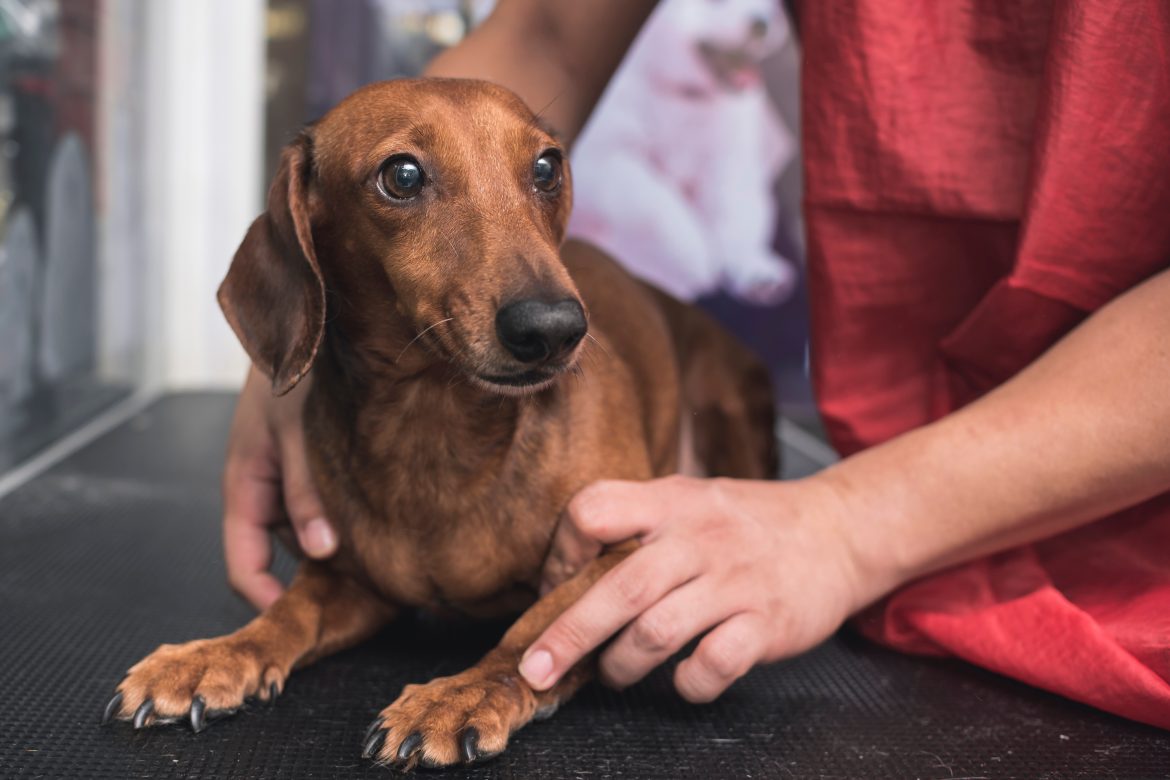No matter what you do, the moment your dog gets into the car, it’s like they can read your mind in knowing they are going to the vet, which leads to instant panic. Well, we have put together a list of simple and effective tips for calming an anxious dog and making the vet visits a whole lot more bearable.
We’ve all been through the anxiety, stress, and nerves associated with the vet’s office – and those are just our own emotions! The dreaded vet visits, which are potentially worse than taking your own kid to the doctor, tend to bring about endless anxiety from the moment you get in the car. And no matter what you do, your precious pooch seems to always experience stress.
Here are our top tips for calming an anxious dog at the vet
1. Get your dog used to travelling in the car
If your dog only associates car rides with vet visits, chances are highly likely that the car is their first sign of anxiety. Get your dog used to travelling in the car and start taking them to fun places like the park, a new place to walk (Walkhaven Dog Park in JHB is always our go-to walk spot), or even the beach if you are lucky enough to live near the ocean.
This will help your dog to associate car rides with good times and not just stressful vet visits.
Read: Why is my dog shaking? 8 Reasons Explained
2. Choose the right vet
The same way that we like to feel comfortable with our medical professional, your dog is looking for a similar level of comfort and connection with their vet. If your vet seems to really stress your dog out, then try going to a different one and observe your dog’s reactions and stress levels.
Granted, the vet’s office is a scary place for most dogs, but having a vet your dog is comfortable with will help ease some of the stress and tension.
3. Visit your vet regularly
Stop putting off those routine healthcare visits for things like vaccinations, dental care, and tick & flea control. Vets suggest you take your dog for a check-up at least once a year, but once every 6 months is sometimes advised as this allows your pet to get used to your vet, and more importantly, for your vet to prevent or detect and treat any underlying health concerns.
If you have more than one dog, then it might help to take them both with to the vet even if only one needs medical attention or a check-up. Another trick is to just stop by for a visit. Phone the receptionist at your vet’s office and ask if you can stop by for a visit with your dog. When you are there, give your dog a treat, greet the staff, and then you can leave shortly after. This will help your dog to know that going to the vet is not always scary.
If the thought of visiting the vet regularly for routine checkups makes your wallet start protesting, consider getting pet insurance to help with the vet bills. We love Oneplan Pet Insurance because they offer a wide range of plans to suit every budget, AND they preload funds for vet visits onto your Onecard so you’ll always be prepared when the bill is handed to you (they also let you keep your favourite vet so that your pet can maintain that important bond!).
Another reason Oneplan is our top choice is that they make sure you’re getting value back on your premiums. As a Oneplan Pet Parent, you can get up to 25% DISCOUNT* on premium pet food, dewormer, tick & flea, chronic care, and so much more on the Onepet Store – meaning you can potentially even get your premium back in monthly pet food savings!
For more information on Oneplan’s pawesome pet insurance, you can click here.
*Discounts are tiered & exclude Accident plan.
4. Conduct a basic physical exam of your dog at home
You can help your dog get used to a physical examination by conducting one regularly in the comfort of your own home. By practising handling your dog and inspecting his ears, tail and body for any strange lumps and bumps, this will make the process when your vet checks your dog, less stressful.
This kind of homecare will also allow you to spend time checking your dog and help you to detect anything that seems out of the ordinary that you otherwise would not have noticed.
5. Stay calm
Don’t forget that our dogs are incredibly susceptible to our own emotions. If you are feeling anxious and nervous, then chances are your dog is going to pick up on your feelings and start to feel them himself. Before visiting the vet, try some deep breathing, talk calmly, and do not get worked up.
It’s fine to reassure your dog and tell him that everything is okay in a calm and relaxed manner, but do NOT sound worried or anxious and keep repeating that everything is going to be okay. Your dog will notice that this behaviour is out of the ordinary and will know something is up.
We hope these tips and tricks help calm your anxious dog and make your next vet visits more manageable.
Yours in not-so-average pet advice,
The Petinsurance.co.za Team



